Your Custom Text Here
A new equilibrium on Ethereum
Gas costs on Ethereum are on the up an up. Not the first time it happens. However, it's the first time that this is coupled with an explosion of present utility value on the platform.
Could this lead us into a new gas cost equilibrium, and what does it mean for the ecosystem?
To answer this question, it’s useful to first align on the context around past periods of high gas cost and network congestion, since Jan 2018.
The priors
In that time frame, there are 3 notable events, namely: (i) the CryptoKitties launch (ii) FCoin’s trans fee mining and (iii) Fairwin.
Source: glassnode.com
What these periods/events have in common is that high gas prices were driven by one entity at a time. The attention, engagement and useage these entities commanded inflated and then deflated fairly quickly. This time, however, things look different.
Fast forward to summer 2020
Contrary to those times, the present condition finds us with (i) several interconnected yet distinct from one another projects/contracts, (ii) a whole lot more stablecoin on Ethereum - which in turn multiplies the economic utility a user can extract from the ecosystem and (iii) more users than ever.
Total DeFi users (cumulative) - Richard Chen
As a result, it’s not a far cry to assume that the current high gas price and network congestion state will persist for much longer than it has in the past. There is no single Ponzi that will eventually collapse, or any other type of attention suck that will eventually totally and irrevocably implode. If we take that operating assumption to be true, then what should we expect for the future of DeFi on Ethereum?
Ethereum on a new gas equilibrium
At this point it’s useful to define the shape of the relationship between the demand for and supply of resource bandwidth on Ethereum.
A way to think about the current state of the platform, is that we are moving from one equilibrium where users accessed limited utility to another where users access enhanced utility. As demand for access grows together with added functionality, user tolerance for higher gas fees increases as their available surplus expands.
It is also reasonable to assume that the supply curve here is an exponential function that approaches perfect inelasticity as the platform output limit is reached (e.g. block space). At this point the surplus available to users (consumers and protocol/app publishers) is capped, and if demand persists, price tends to infinity, supplier/miner surplus skyrockets yet output remains capped.
Naturally, given that existing on Ethereum as an economic agent is not (yet) a necessity for most, users will start dropping off at the point where the cost of operating (gas) starts eating into user surplus. This is more true for consumers than it is for publishers - which likely have a higher pain threshold.
A house of cards
Now, there are several open questions here - namely: (i) have contract designers, architects and operators planned for a new equilibrium on Ethereum? (ii) If this is indeed a new equilibrium re: gas cost and overall activity on the network, how much room do current contract operators have to wiggle? (iii) How ready are L2's (and horizontal standards thereof) for primetime?
If the present trajectory holds and the assumptions above are true, then we will inevitably reach a point where output remains stable as we will be at max capacity (perfectly inelastic part of the supply curve above), but prices will keep rising. At some point price will be so high that it starts eating into user surplus. Users (in this case both consumers and protocol publishers) will likely start dropping off and the Ethereum economy will return to a lower equilibrium. It will first be the minnows and then the dolphins, leaving sharks and whales operating - albeit at margin compression, as the providers of the yield (minnows) will have been priced out at that point.
The way forward
Since Ethereum 2.0 won't be functional for the forseeable future, here's some ways in which we might end up avoiding the condition described above: (i) users will tolerate ever growing fees and network slowdown (unlikely), (ii) app builders and users move onto Ethereum killers, and (iii) Ethereum Layer 2 gets activated in a big way.
Option (iii) looks like the path of least resistance at the moment - but tread lightly, as this space if still fraught with a lack of standardisation that might make reconciliation of transactions across different L2 approaches a complex endeavour (to the extent that it might make L2 scaling unusable at scale for - at least - the short term).
Bitcoin bubbles; the optimal distribution mechanism
Why planned fair distributions don't work for broad use cases - adapted from an internal memo drafted in May 2019.
Bitcoin’s volatility profile is - by now - the stuff of legends. Monumental, euphoric rallies give way to abrupt, violent crashes and proclamations of Bitcoin’s demise (380 and counting). Thus far, the cycle has repeated without failure, earning Bitcoin the “Honey Badger” moniker in the process.
As the current cycle is unfolding, behind the BTC/USD pair’s most recent gyrations, new types of participants are entering the market; traditional macro money managers (e.g. PTJ) and nation states (e.g. Iran) are becoming increasingly open about dipping their toes in the cryptoasset ecosystem.
With every new type of player that jumps on board, the likelihood of Bitcoin becoming a widely accepted store of value and the Bitcoin blockchain becoming a globally accepted settlement layer, increases. The “why” Bitcoin makes for a good settlement layer and store of value has been covered extensively. However, the “how we get there” remains somewhat elusive. In this post, I will attempt to unpack that.
Fair != Equal
Let's for a moment imagine what an optimal state of the Bitcoin network at maturity looks like; Bitcoin is a widely accepted global store of value and/or settlement layer; global institutions (e.g. central banks) are on board, co-existing with crypto-native actors (e.g. miners); market manipulation is too expensive to attempt, as are direct attacks on the network; BTC is distributed widely among holders, such that network participants extract maximum value by being able to settle with all other parties they may wish to, and that no party has disproportionate “bargaining power” over network outcomes, allowing participants in the network to be continuously incentivized to remain participants.
From the above, a “fair” allocation of BTC among holders seems to be a key underlying requirement for this future to come to bear. Note that “fair” is not the same as “equal”.
Fairness, in this case, implies that every participant’s utility function is maximized, subject to their unique constraints. Under that condition, “equal” is “unfair” and therefore, unsustainable.
If we assume the “fairness” condition as requisite, then while not necessarily an easy pill to swallow, the rollercoaster ride might be the *only* path available to get us there. To illustrate the point, an approach by deduction reveals why the competing approaches cannot work;
A centrally planned diffusion mechanism: this construct fails as the planner holds all the bargaining power - such that no other party would willingly opt-in. In order to be executed effectively, it would have to be orchestrated and delivered by a benevolent dictator (a party with perfect information and perfectly benign incentives), and for all participants in the network to trust that the allocator is indeed benevolent. In practice, impossible.
A diffusion mechanism planned by a “political” coalition: this can’t be orchestrated in a multi-party explicit negotiation format, because there are too many conflicting interests at play in order to implement top down consensus. If it is sufficiently hard to achieve with structures where there is some cultural cohesion (e.g. EU and the Eurozone), it should be near impossible to achieve at a global scale.
Economic bubbles as a by-product of fairness
So if we agree that neither of the two are viable options, the only option left is a free market mechanism; a continuous game, that is played by individualistic agents with hidden preferences, in near infinite (and infinitesimal) rounds, that allows for each participant to opt-in at the valuation that perfectly satisfies their objective function (what they strive to maximize under given constraints), therefore covering the full utility spectrum of the population of agents.
Hidden preferences become revealed ex-post and as such competing agents cannot devise a strategy that creates a surplus for themselves that leaves others at a deficit ex-ante, resulting to an ultimately fair distribution. And in the process of revealing preferences in a continuous game with infinite rounds, bubbles are created. Competing agents with similar objective functions are forced to respond to the first mover among their counterparts and jump on the bandwagon. Under scarcity, the price rallies, until the reservation price of agents that opted-in earlier is met. At that point the distribution phase begins, as earlier participants divest and get rewarded for stewarding the network thus far, by locking in a margin. As painful as the process might be, it ultimately yields to a fairer allocation.
As the "rounds" of the tacit negotiation - come free-market-bonanza - game unravel, the very nature of the platform evolves, opening up to a wider possible utility spectrum. With time, the network becomes more secure as wider margins become available for miners (either through higher prices or through advances in operational efficiency) and more resources are committed towards Bitcoin’s Proof of Work. It follows that as the network’s security improves, it opens up to new types of agents that are striving to maximize value preservation potential, subject to the liability they have to their constituents (measured as risk). The more types of agents there are on the network, the better a settlement layer it becomes, and so on.
Therefore, there is sense to the idea that progressively larger agents would opt-in at a higher prices, as they are effectively buying into a fundamentally different - and arguably better - network for value store and transfer. And with every new type of agent unlocked, the bandwagon effect re-emerges.
Conclusion
Bitcoin might not have been a secure or wide enough network for Square (an agent to its shareholders) to consider as its future payment rails and settlement layer in 2015. It is in 2020. Similarly, while Bitcoin might not be a secure or wide enough network for a sovereign to opt-in in 2020, it might be in 2025.
So, not only should we not be surprised by the new type of participant that is emerging in the early innings of this cycle, but we should expect more of this as the network’s value increases and its security profile improves.
And in the process, we should learn to accept the nature of the game.
PoW mining: the role of producers in Bitcoin’s market structure
Presentation from the Greek Cryptocurrency community meetup on the 25th of April 2020.
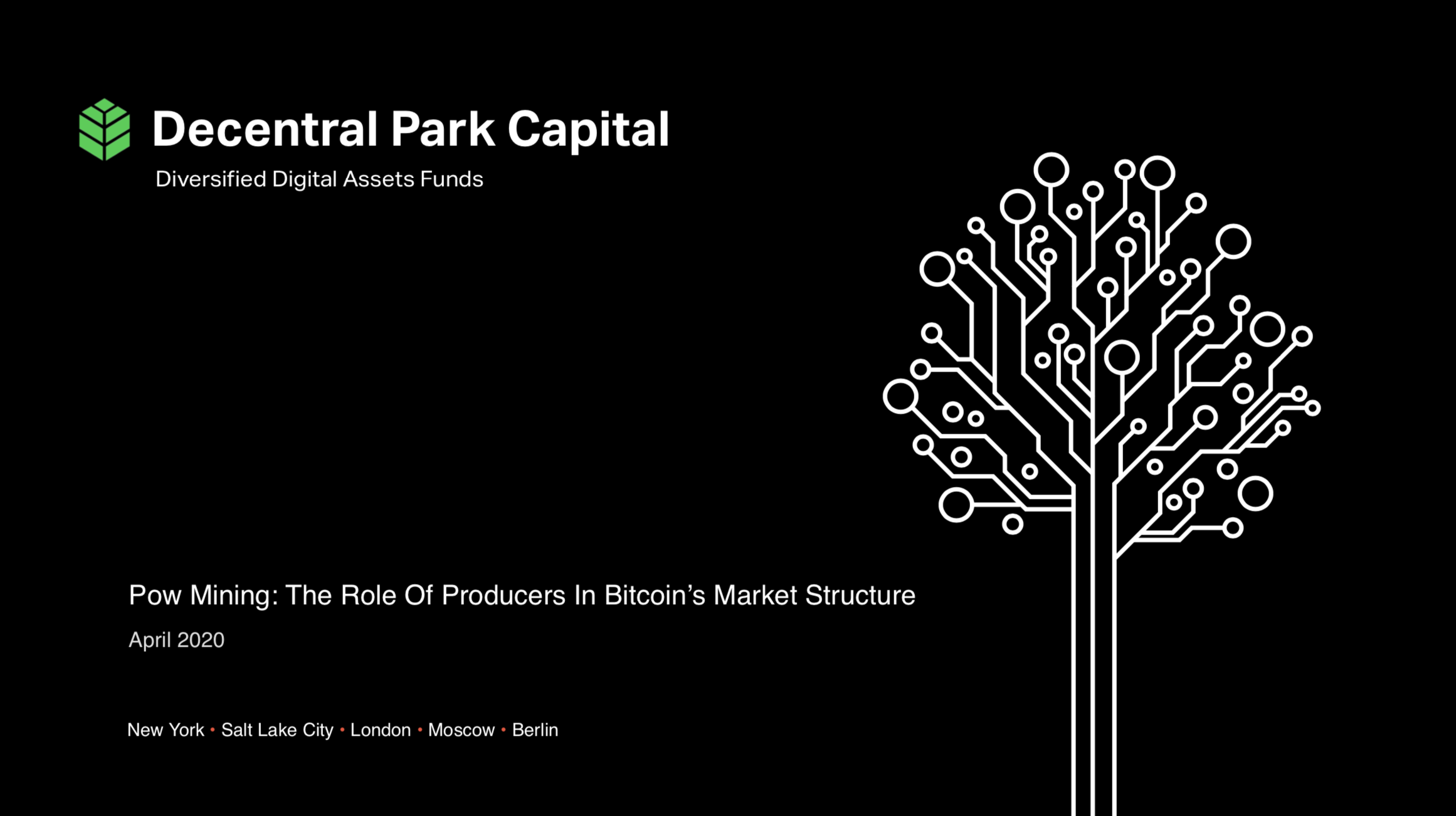
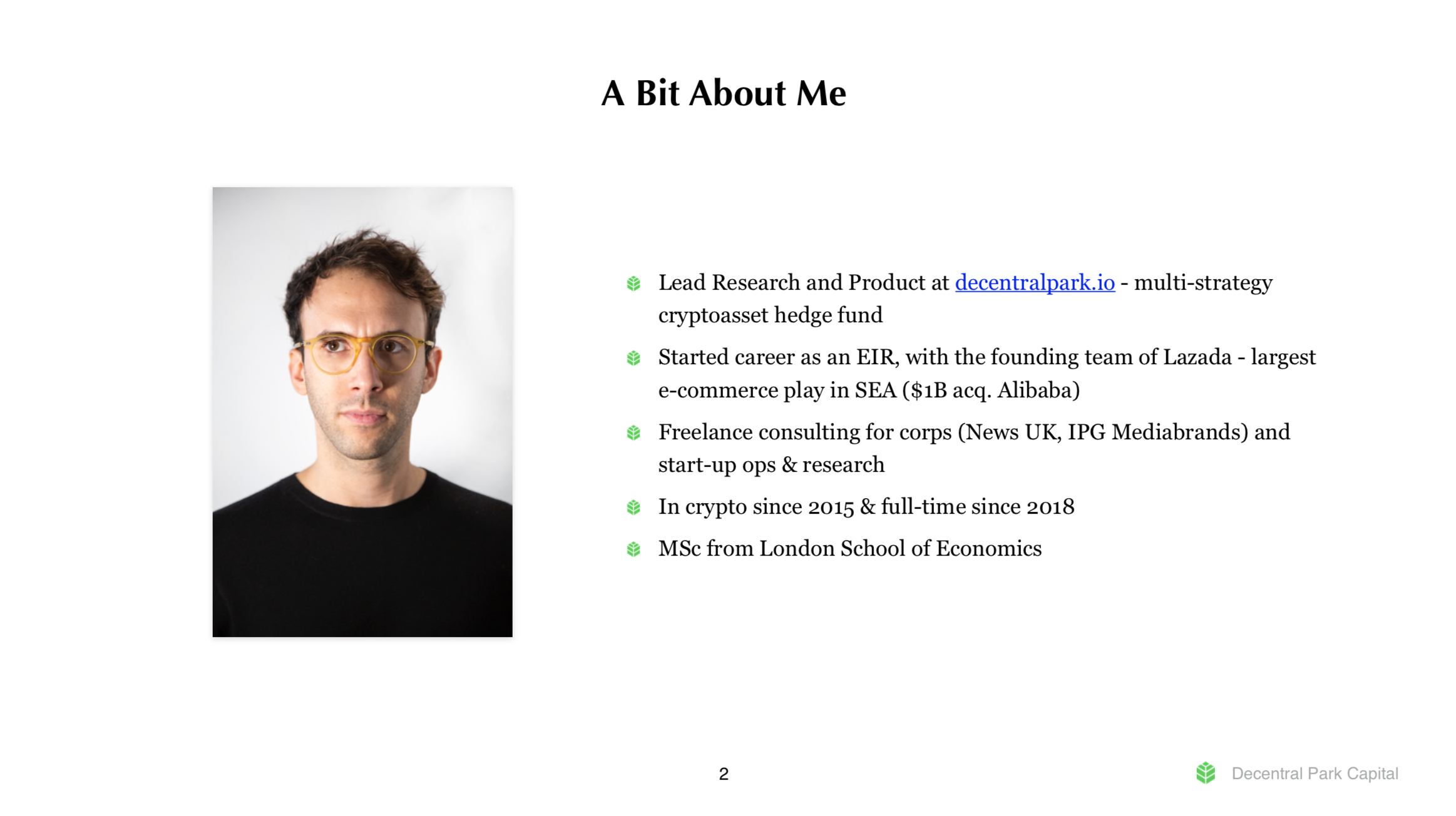

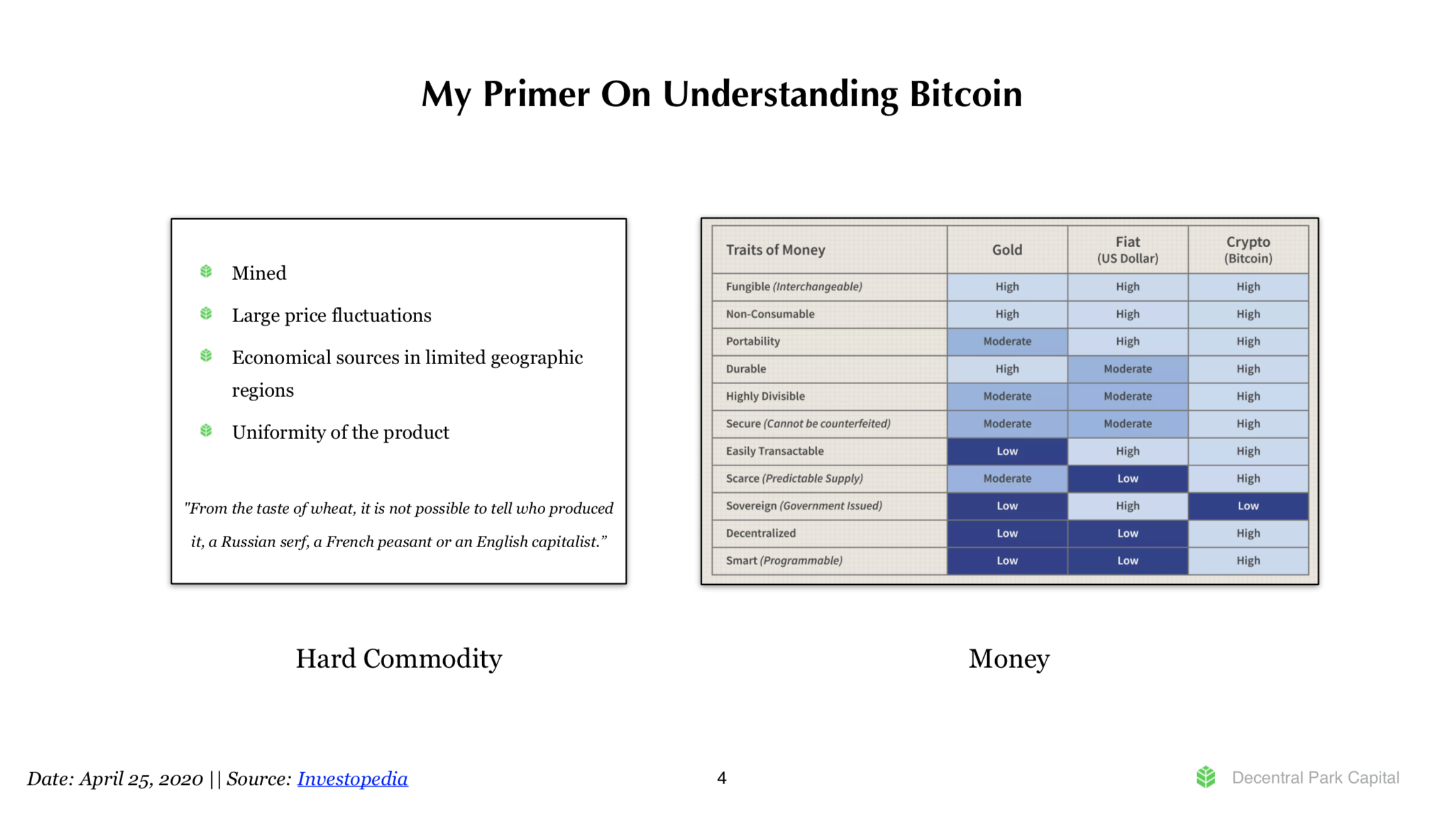




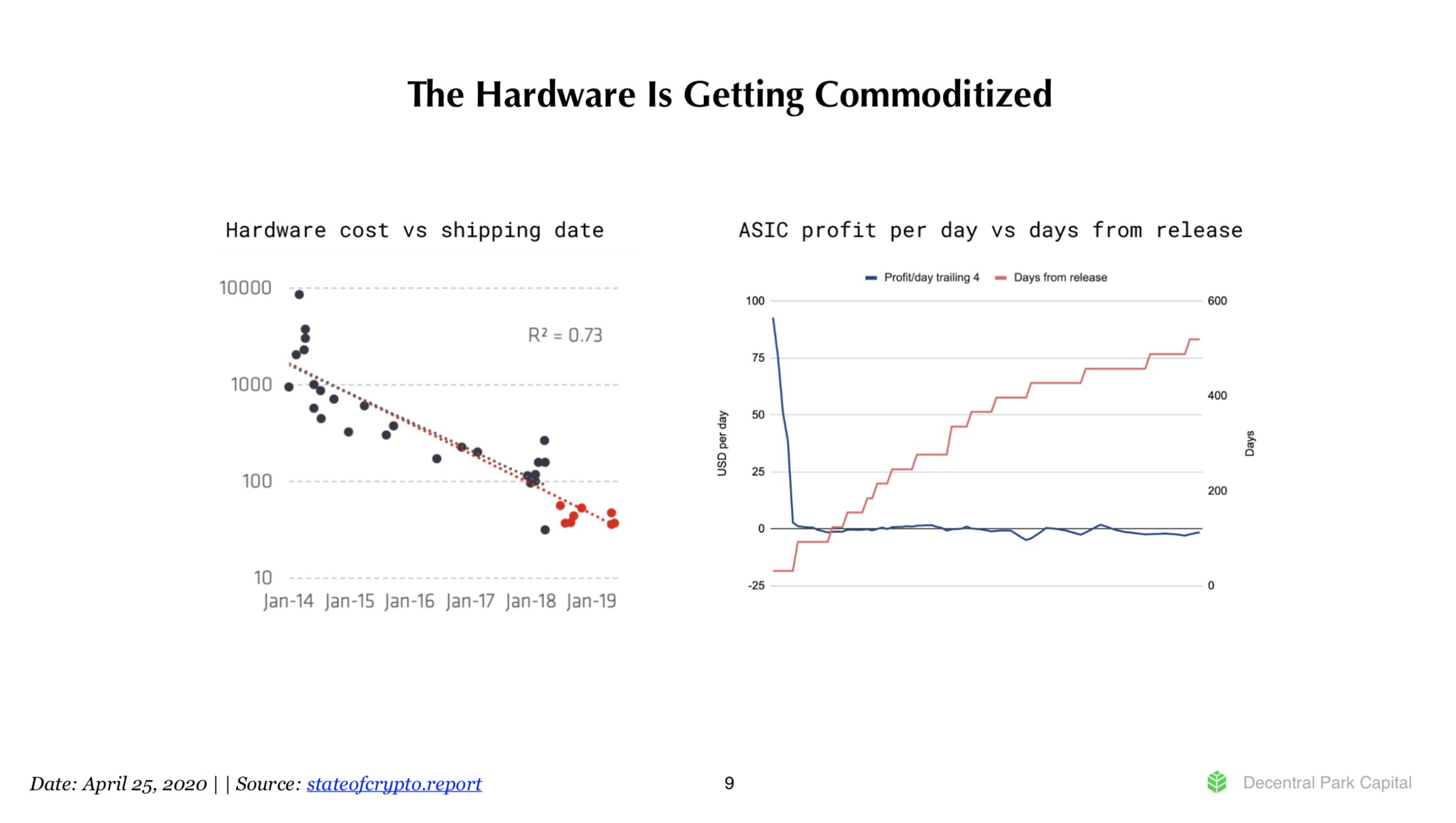
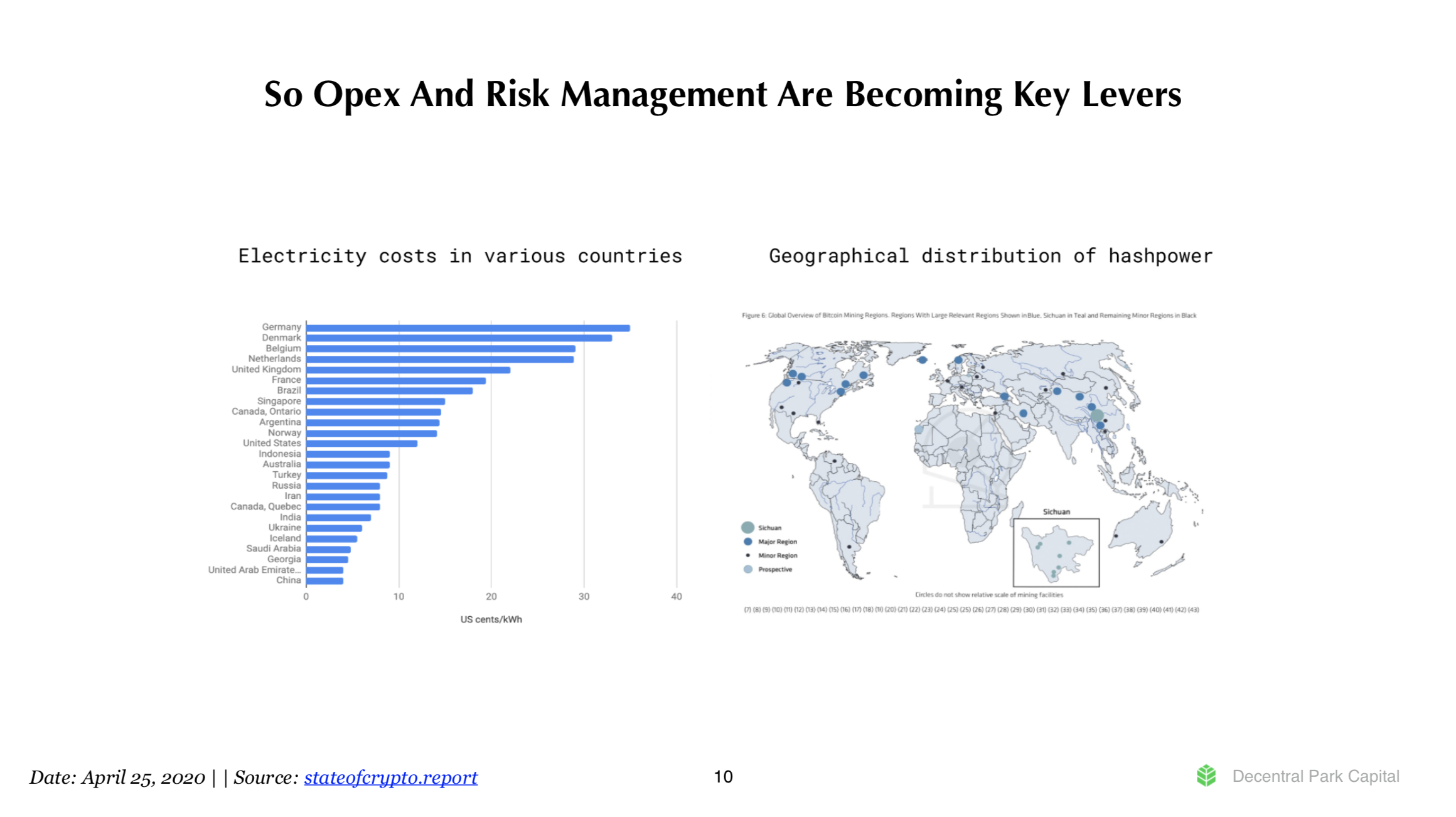
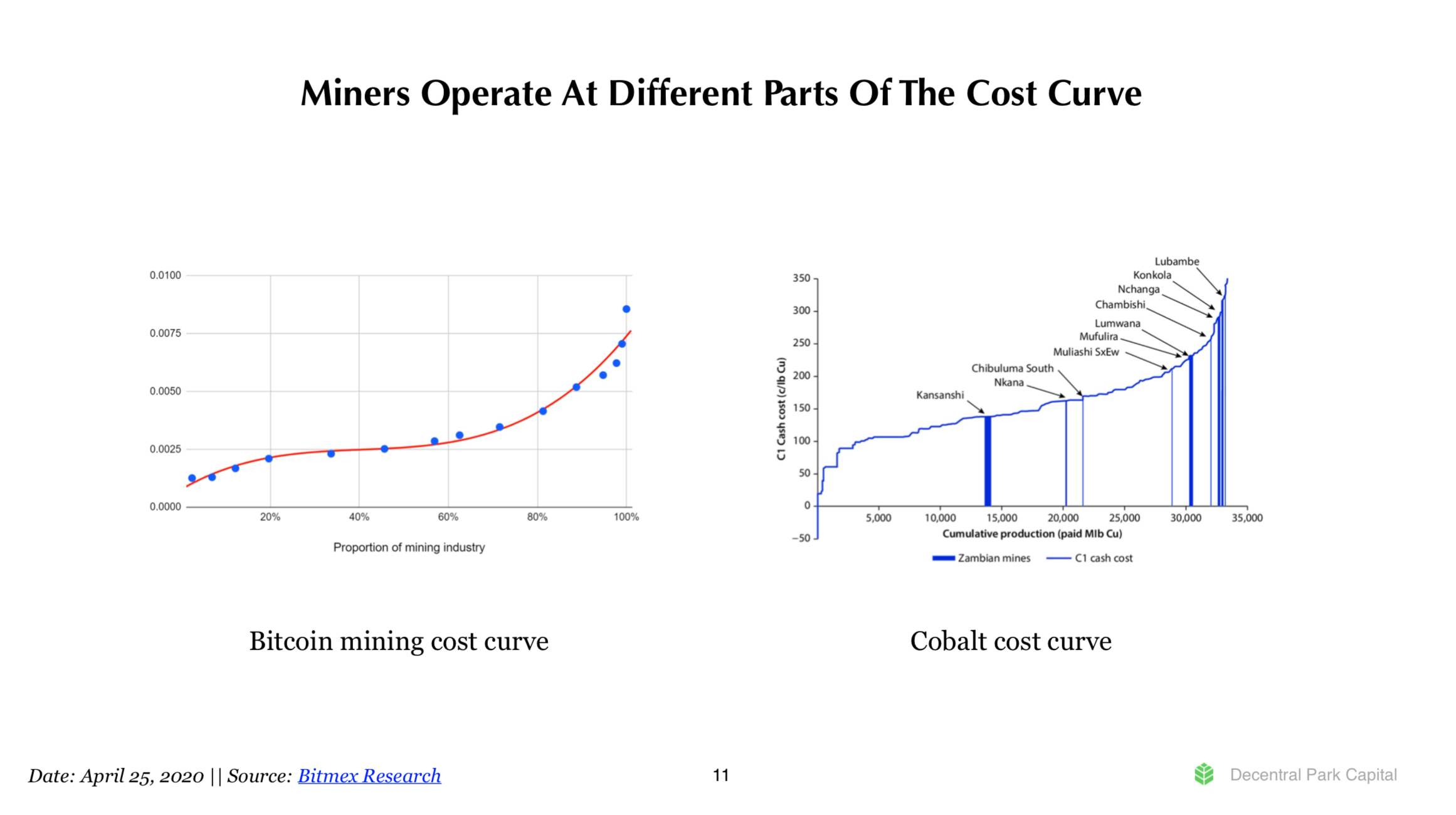
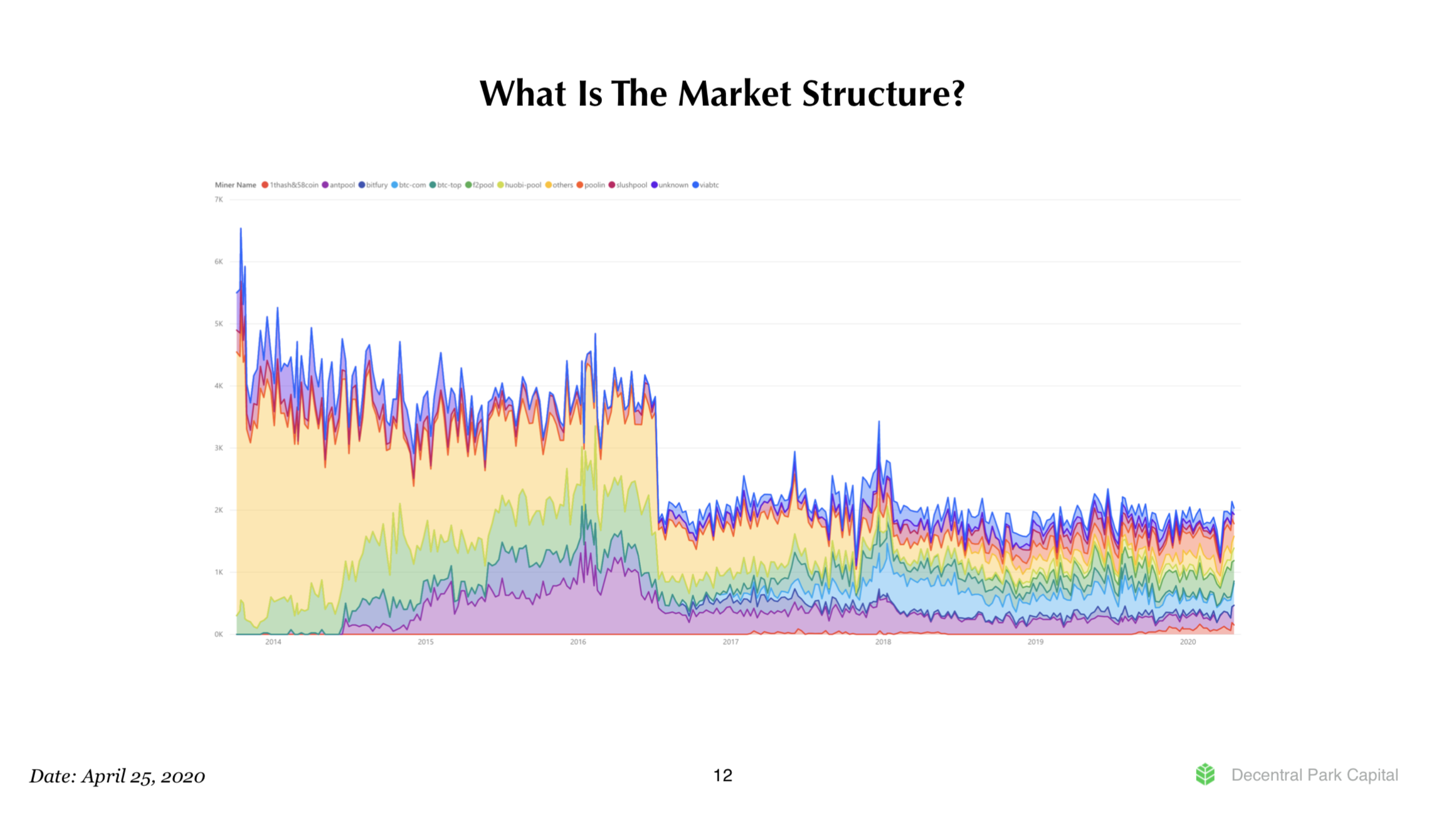
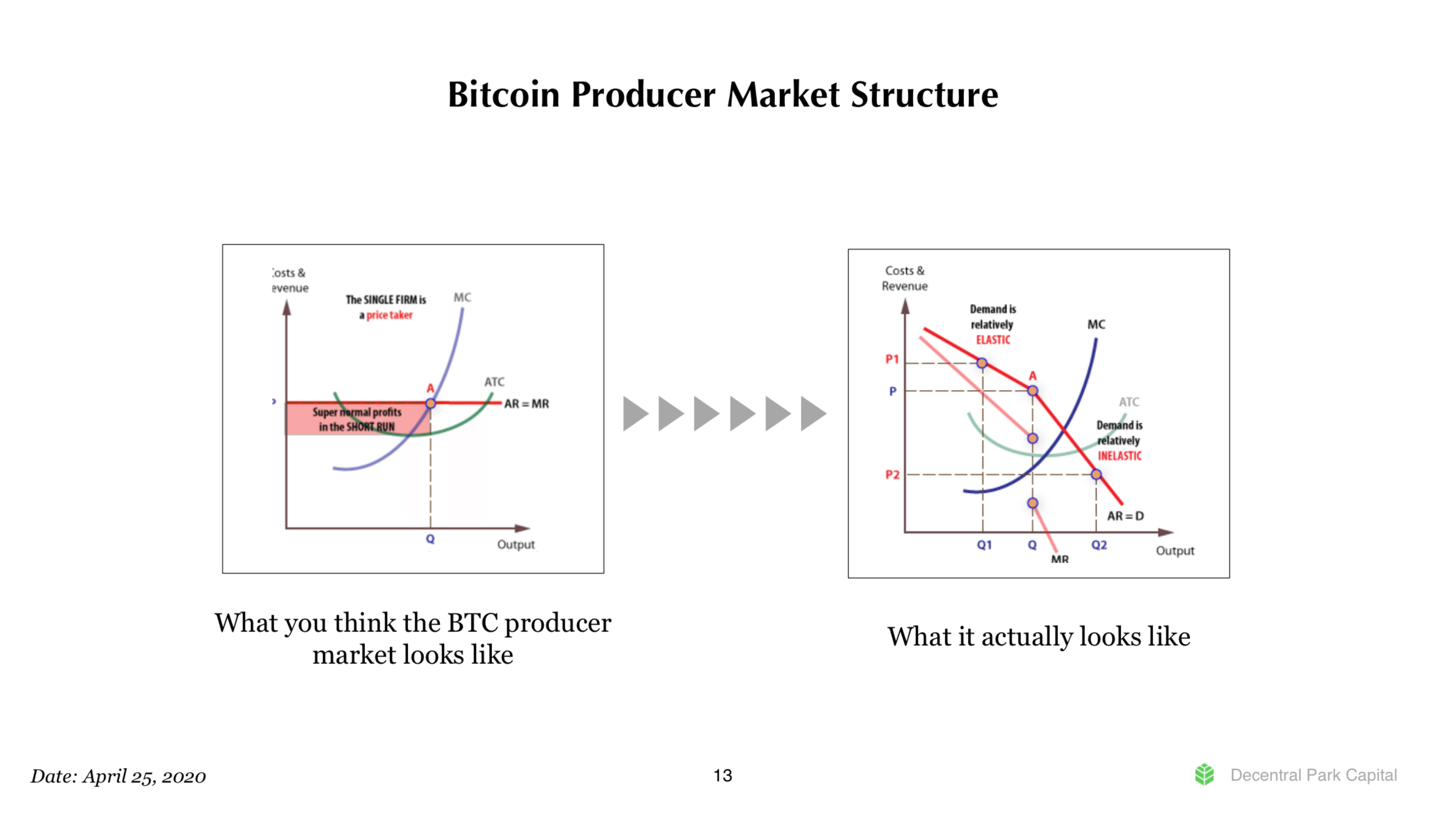

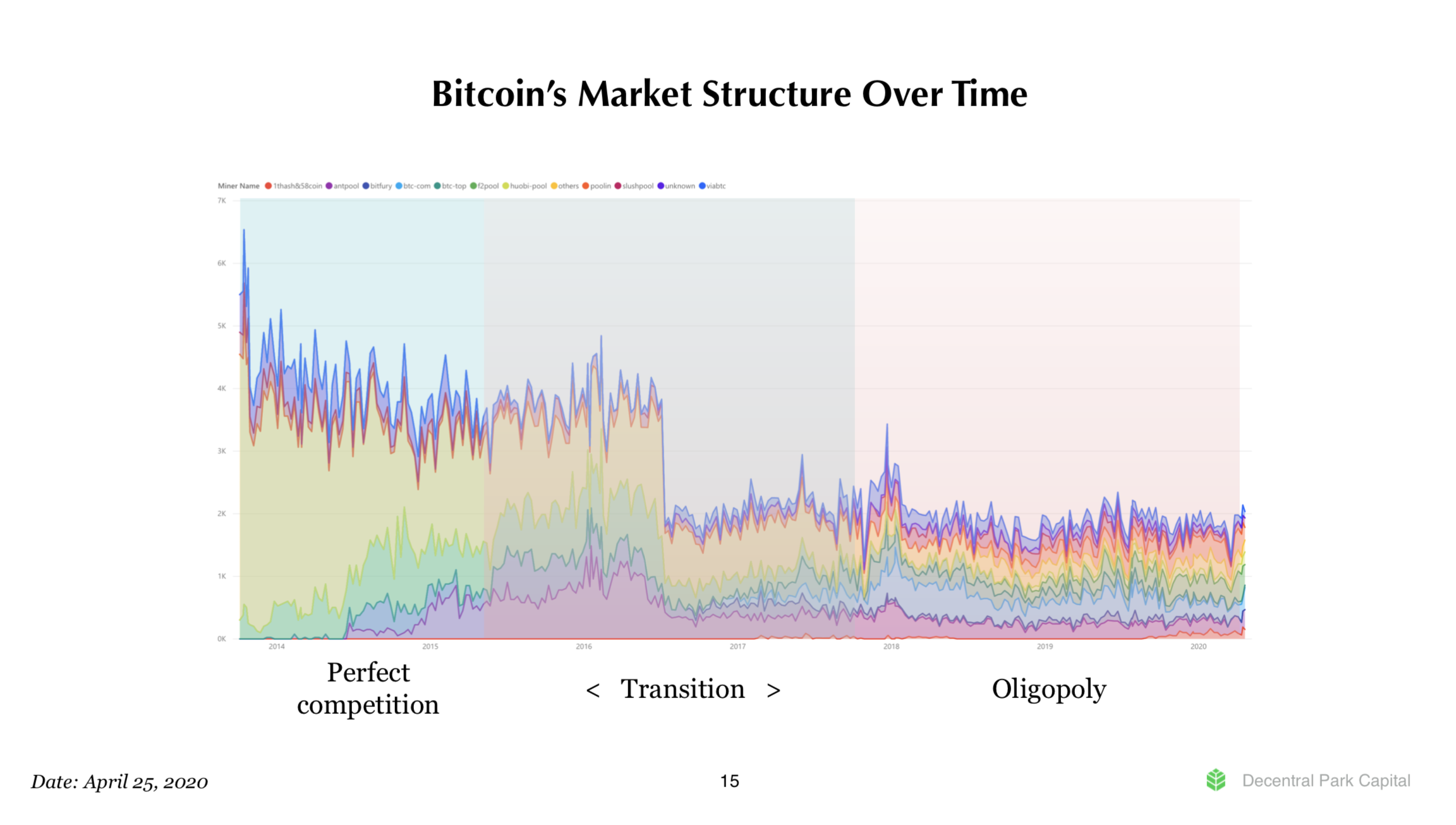
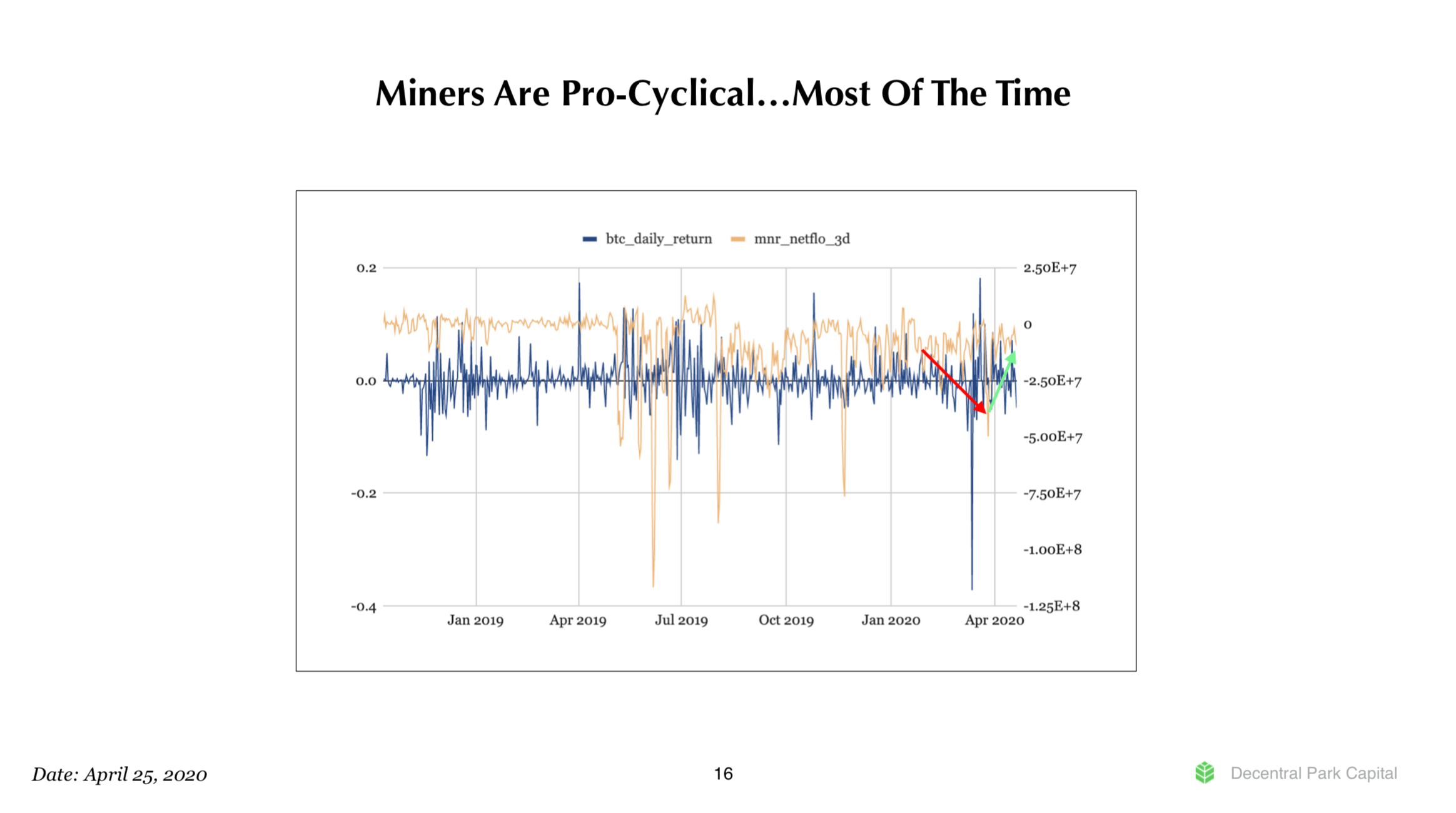
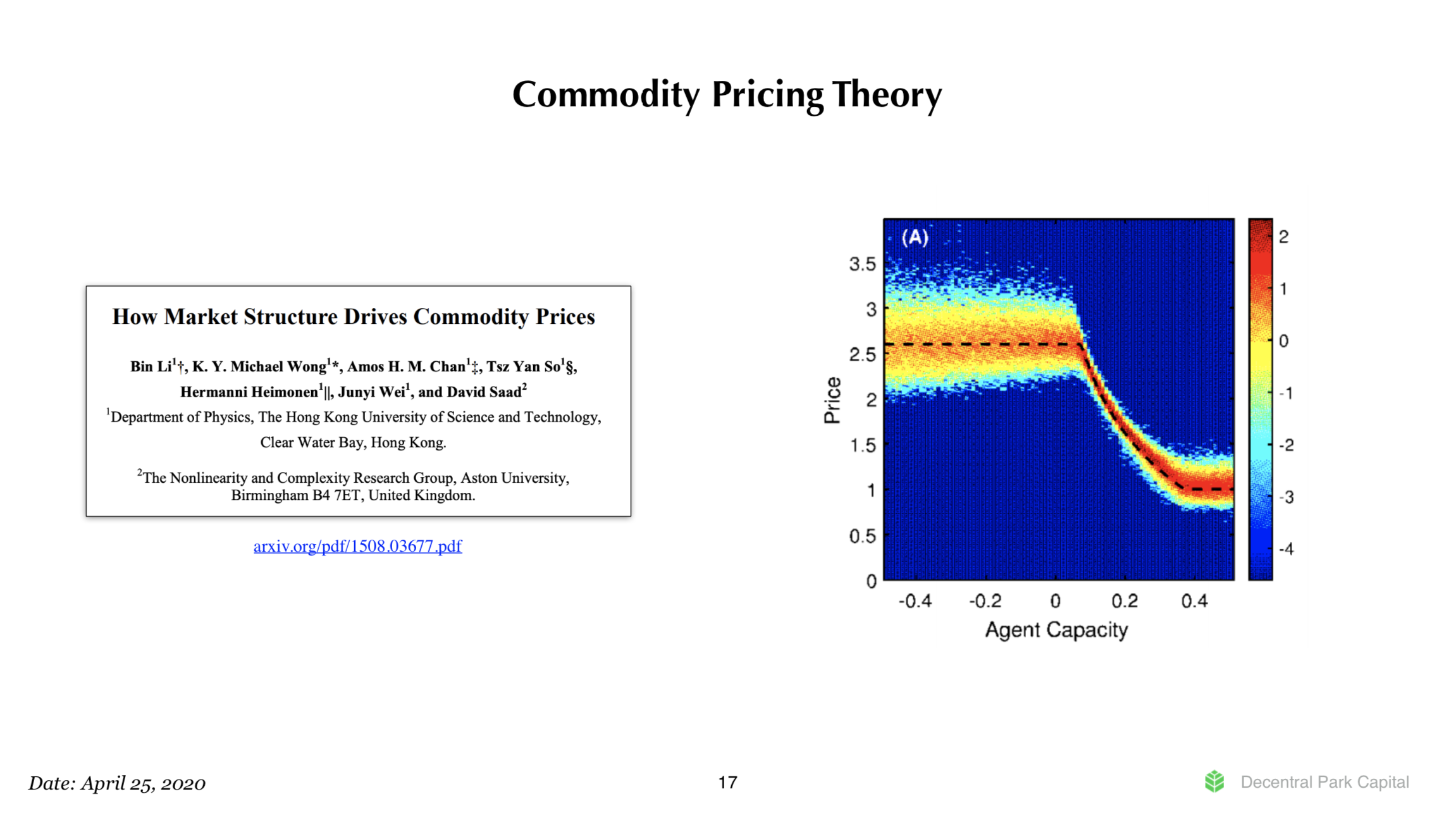

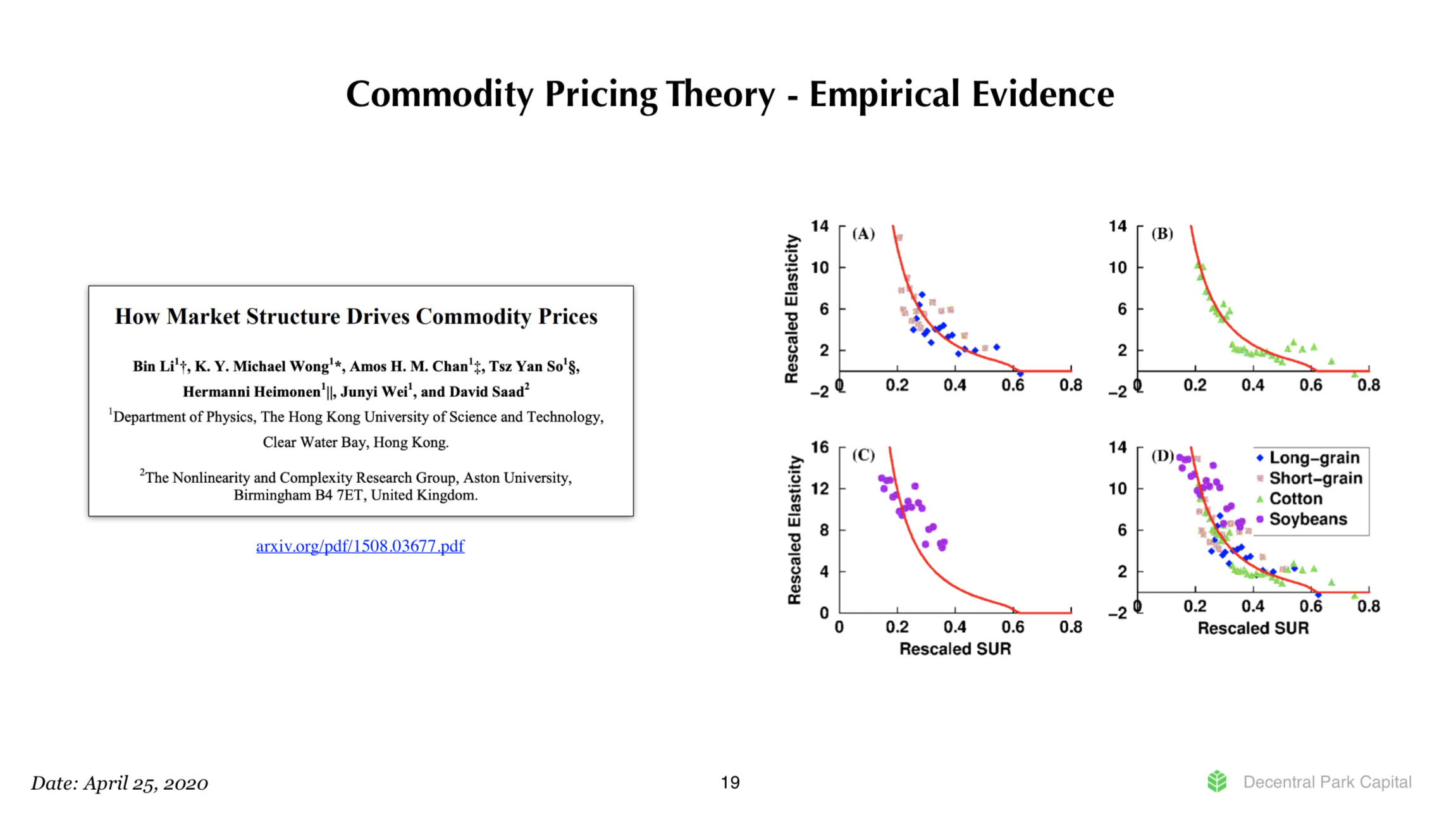
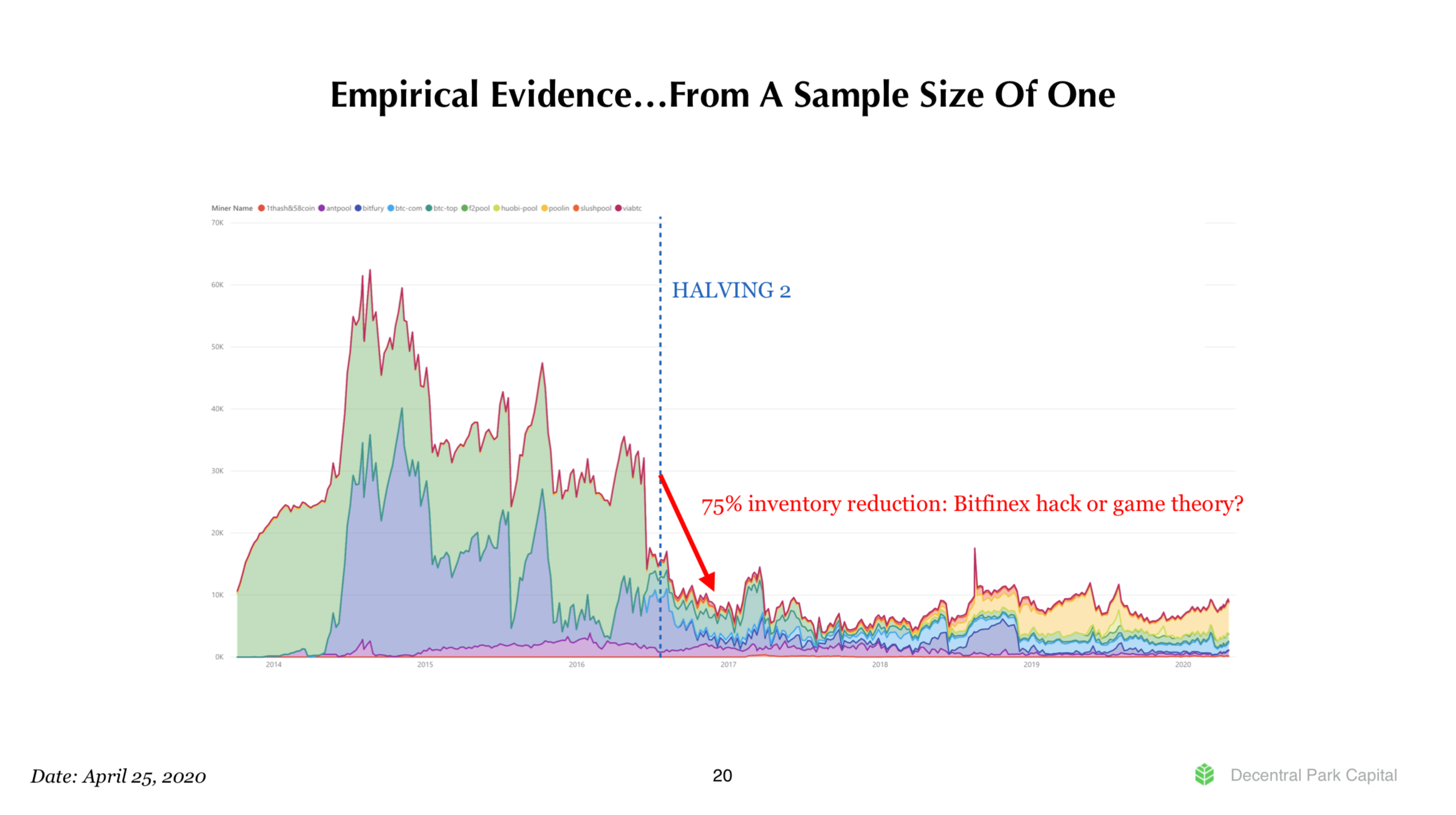

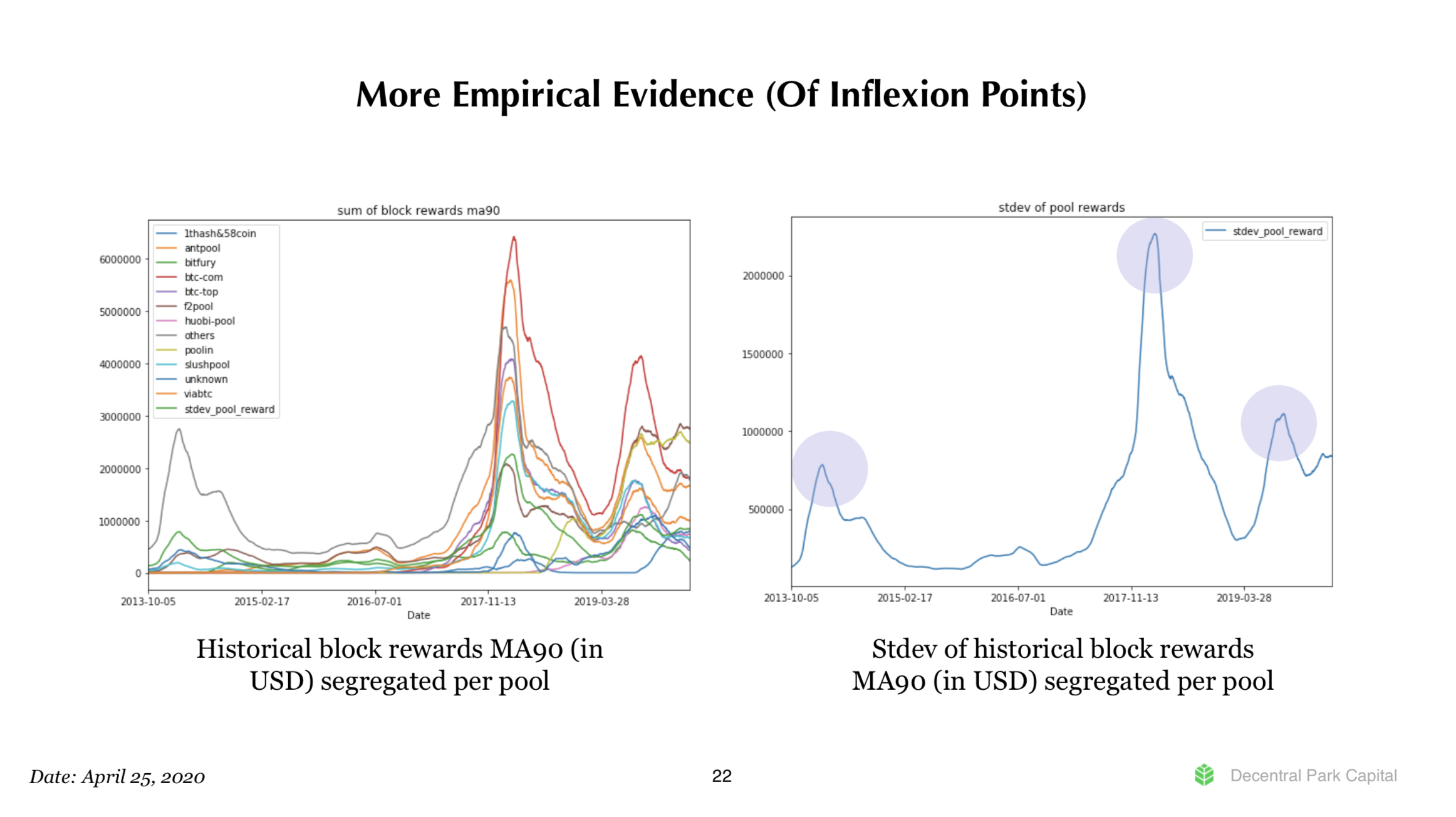
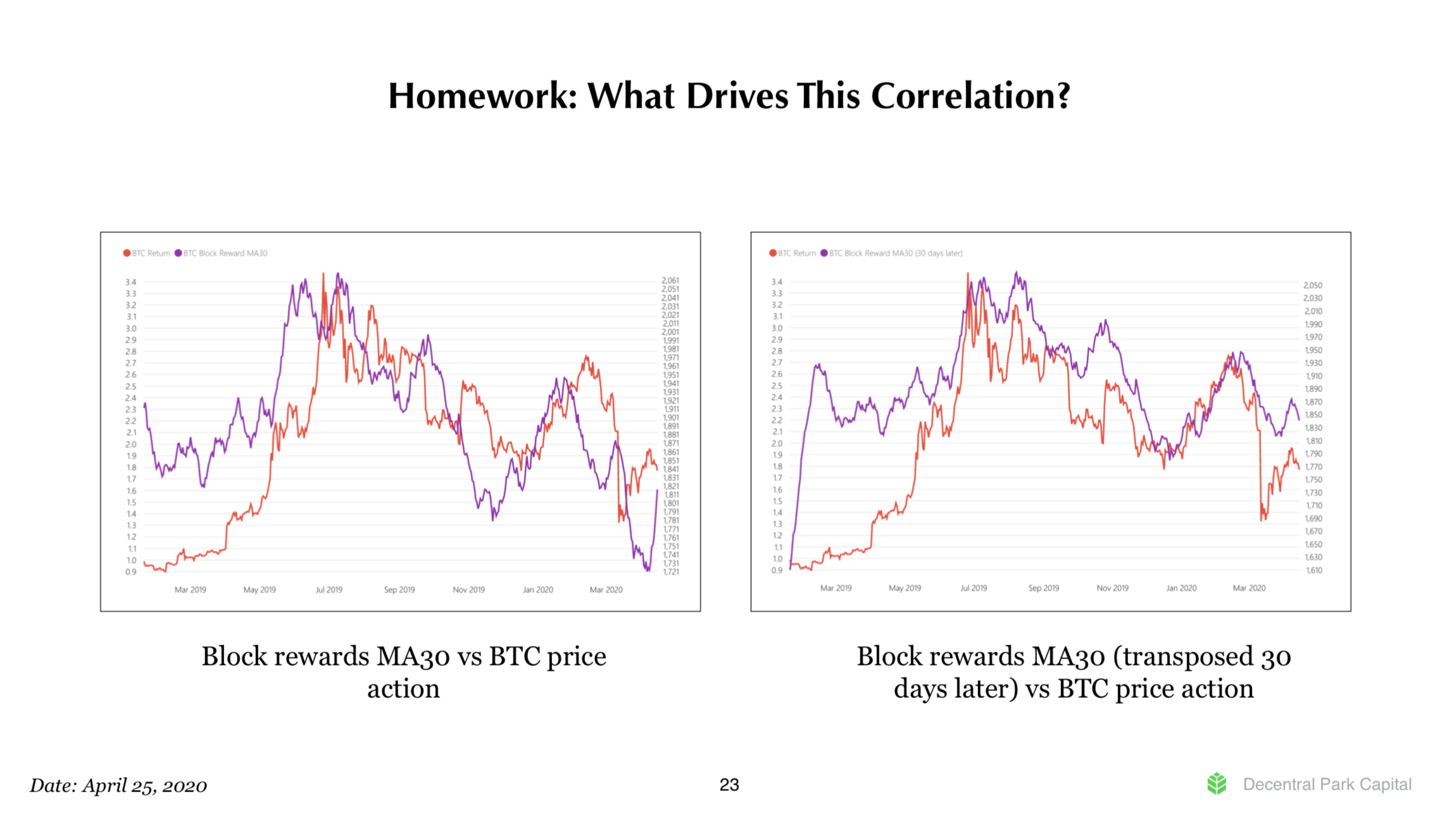



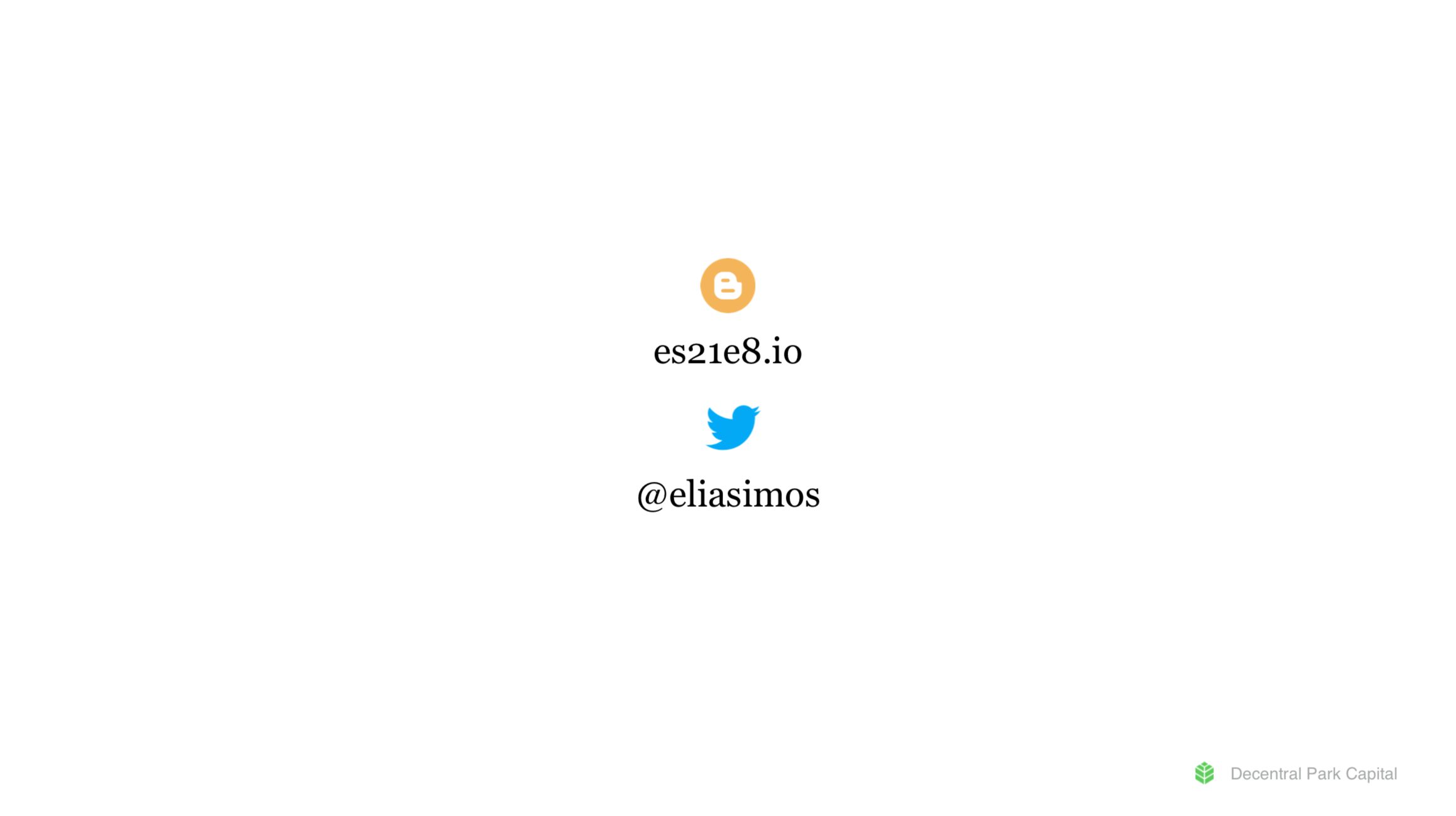
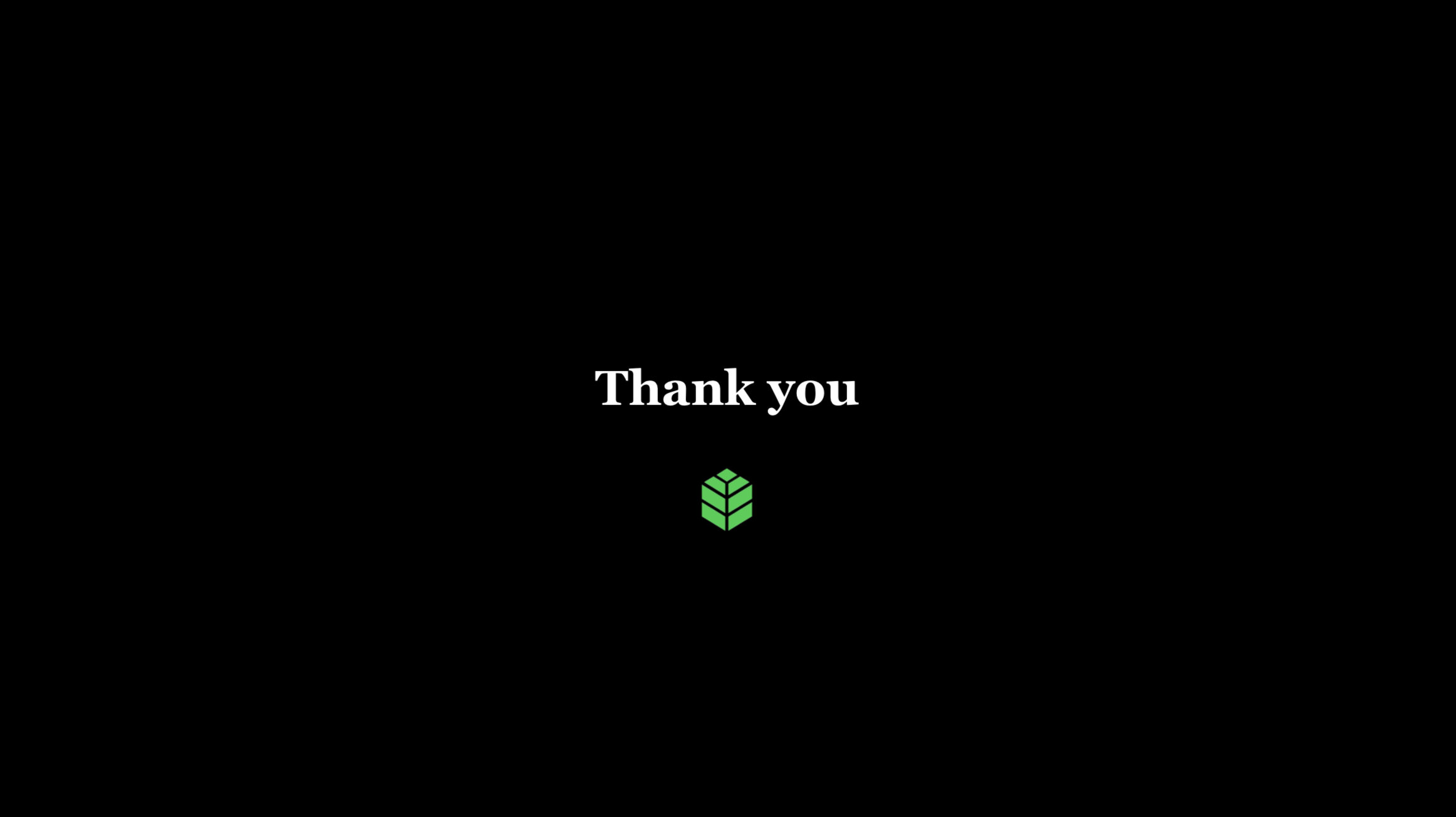
Recording from the MIT Bitcoin expo 2020
In early March 2020, Tara and I presented the collaborative State of Adoption report at the Bitcoin MIT Expo. As Covid-19 was starting to spread fast in the West, we opted for zooming in rather than attending in person - a decision we made only a week before the event. As things unfolded, more than half of the presenters and panelists ended up tele-participating.
In early March 2020, Tara and I presented the collaborative State of Adoption report at the Bitcoin MIT Expo. As Covid-19 was starting to spread fast in the West, we opted for zooming in rather than attending in person - a decision we made only a week before the event. As things unfolded, more than half of the presenters and panelists ended up tele-participating.
Even so, the way the organizers and production handled the transition to digital presentations in such a short time, was impressive. Thank you to all involved in making this happen - including all that contributed to the piece.
Hopefully next year we get to do it in person.
State of Adoption 2019/2020
Access the full presentation at stateofcrypto.report
In Jan 2019, while at The Graph Day 2019 in SF, I caught Tara Tan’s presentation on designing for users in crypto. I immediately thought it was powerful.
A combination of data that lay the problem bare (e.g. 42 or so user steps to use Maker DAO) and allegories that made the subject relatable (e.g. the bicycle being a fringe technology until it became user friendly - read: dominant design) carried an important message through; crypto needs design. But perhaps more important than the message, was the delivery - which proves the message’s point in this case!
Intrigued, a few months later, I got in touch: “hey - loved your presentation at The Graph Day, let’s connect and see if there’s common ground we can work on together”. Fast forward to June 2019 we had a plan to draw up a report on the state of adoption in crypto. We quickly realised that in order to create something impactful, but also true to the facts and thin in bias, we would need help.
Enter the State of Adoption 2019/2020: a collaborative report on the state of things in crypto, pulling data and insights from world class operators (e.g. Bison Trails, River Financial), investors (e.g IDEOVC, Outlier Ventures), data co’s (e.g. Token Analyst, Dune Analytics), native to the cryptoasset ecosystem.
With this piece of work, we aim to align investors and entrepreneurs already active in the space, but also intrigue and inspire those that are curious, with respect to where we are at, where the opportunities lie, and what it will take to bring us to the new paradigm.
Cryptoassets in transition
Taken from Decentral Park’s Annual Investor Letter for 2019
2019 has been quite a ride for global markets. The year started with a rallying S&P and confident markets which quickly transitioned into fear, uncertainty and doubt, as the Sino-American trade war took center stage and the yield curve inverted for the first time since 2008, summoning fears of an impending recession. In that environment, cryptoassets had a mercurial H1 2019, coming off of a brutal bear market in 2018.
Emerging cryptoassets within the cluster outperformed the average in Q1, passing the baton to Bitcoin in Q2, which led the way with a 230% appreciation, bottom-to-top, from April to July 2019. At the time, there were strong indications that the pent up demand for capital flight from China found a suitable vehicle in Bitcoin, as global economic uncertainty rose [1]. However, this did not sustain for long, leading the overall asset class to deflate by ~50% over the course of H2 2019.
Although Bitcoin failed to meet expectations set by the excitement garnered by 1H19’s run-up to $13k per BTC, the asset class overall is once again the best performing for the year, returning +90% beginning to end, whereas the NASDAQ returned +38%, the S&P +31% and REITs +27%.
Be that as it may, the sentiment among market participants - at present - is much bleaker than the absolute YoY performance implies, reminding us that biases are omnipresent in how sentiment manifests in markets. In this case, it is an anchoring bias, a recency bias and loss aversion in full effect [2].
As Bitcoin descended from July highs for most of 2H19, the trade war fears were dispelled and under the onlook of a dovish Fed, the Dow and the S&P both broke to new all-time highs. Considering the developments within the world of cryptoassets, we are - quite frankly - dumbfounded by the weak sentiment. While being cognizant and appreciative of the limitations of cryptoassets and the challenges that lie ahead, we cannot help but continue to be optimistic about the medium and long term prospects of the asset class.
2019: a year of quiet infrastructure development
Our thesis has always been that there are two forces that charge adoption prospects for cryptoassets; 1. top-down adoption by institutions and legacy finance, and 2. bottom-up adoption of Web 3.0 and Open Finance innovations and primitives by the general public. 2019 was a year of steady infrastructure development and deployment in both of these areas.
Top down
2019 saw a continuous stream of innovation in institutional infrastructure, with cornerstone products such as digital asset custody and derivatives being delivered and further developed from both legacy players such as Fidelity, ICE and the CME [3], as well as crypto native players such as Coinbase, BitGo and Binance [4]. These advances are bringing mature and trusted prime brokerage solutions closer to the cryptocurrency industry, and will enable the deployment of ever more complex strategies at scale, while simplifying the complexity at the base layer of this technology, head-on.
At the same time though, 2019 saw multiple rejections of applications for a Bitcoin ETF - and for good reason. The market is still fairly fragmented, small and immature for an ETF, with a prime example being the lack of a generally accepted and agreed upon true price of Bitcoin. Despite this, in December 2019 Charles Schwab reported that Grayscale’s Bitcoin Trust is the 4th most popular equity amongst Millenials in their customer base - more popular than Netflix or Berkshire Hathaway [5].
As progress in data pipelines is made and liquidity improves, the uncertainties around the asset class will become increasingly less, at which point we expect to see the development of products that will make Bitcoin’s inclusion into ISAs (Individual Savings Account) and IRAs (Individual Retirement Account), a matter of routine.
While we do not believe that this will become commonplace in 2020, we do believe we will see material progress in that direction, both in regulations, and in market structure/infrastructure.
Once that milestone is cleared, and the asset class has grown sufficiently to become even more generally accepted, the probability of it being included as an asset of pension funds and endowments increases dramatically. The most forward thinking of the largest allocators are already getting smart in and around the asset class, primarily via allocating to Venture Capital [7], while some have started dipping their toes in direct token purchases.
The last but perhaps most important piece of the puzzle for top down adoption is regulatory clarity - or, at present, lack thereof. Bitcoin’s Q2 ascent was accompanied by the announcement of Libra - Facebook’s blockchain-based stablecoin initiative, that would - upon launch - bring digital wallet infrastructure to Facebook’s massive user base.
Libra’s launch was soon put on hold by US lawmakers, with both Mark Zuckerberg and David Marcus (Libra CEO) having to undergo multiple rounds of hearings in front of the US Congress and Senate. The biggest result to so far come out of those hearings, was the lack of alignment among members of the House and Senate, which continues the uncertainty for entrepreneurs and managers in the space.
Meanwhile, in October, Xi Jinping publicly labeled blockchain an important strategic focus for China, causing a flurry of activity in the market [9]. Amongst the most notable events to follow, the Bundestag issued a decree enabling German banks to sell and custody crypto starting 2020, the ECB announcing a proof-of-concept for anonymous transactions using central bank backed digital currency, and more recently a draft bill entitled “Crypto-Currency Act of 2020” was introduced in the US House of Representatives.
Given the sense of urgency that China’s aggressive move seems to have instilled in its counterparts, we believe that 2020 is going to be a pivotal year for a much needed regulatory framework that will de-risk the emerging asset class.
Bottom-up
Even in the face of structural uncertainty, in 2019 the builders have been hard at work and their labour is already bearing fruit - with Ethereum (#2 public blockchain and #1 smart contract platform by market capitalization) the clear leader in attracting developer interest. Ethereum has been a hotbed for developer activity, with Open Finance (or DeFi) use cases finding notable traction.
There are now stable value issuers (e.g. Maker DAO), loan facilities (e.g. Compound), market makers and exchanges (e.g. Uniswap, Kyber) and derivatives facilities (e.g. Synthetix) that are fairly well established, while we are seeing use cases in insurance (e.g. Nexus Mutual), interfaces (e.g. Zerion), and payments (e.g. xDai) emerge.
These protocols and applications live purely on-chain, are largely software operated and have processed multiple hundreds of millions of USD in loans, payments and collateral value in 2019 [10].
Over the course of 2019, Ethereum became a lot more expressive. There are now more frameworks, IDEs and mature blocks of value within Ethereum that can be used as references for new applications, enabling developers to deploy a wider array of features, faster than ever before.
Given the product/market fit that the category is showing, Ethereum’s lead in developer mindshare and maturity of tooling, but also being cognizant of the platform’s scaling and governance limitations , we believe this to be the space where most value will be created and captured in the next 2-3 years.
It is indicative that in an indexing exercise exploring 2019 returns, DeFi has been the standout performer, primarily driven by the mercurial H2 performance of Synthetix (SNX) - a 30x run. Additionally, the money and finance related indices have strongly outperformed all other clusters in 2019 - a clear indication of where product/market fit can be found at present and how much it matters to the market.
Some of the areas that we are excited by within the cluster, are synthetic asset solutions that will reduce collateral ratio requirements, allow for legacy assets (e.g. equities) to be printed on chain and transacted at a fraction of the cost of traditional brokerages, enable new forms of hedging risk for crypto native businesses (e.g. hashrate derivatives) and - well - new forms of leverage. After all, given the early stage we are currently in, speculation largely remains the main use case.
Concurrently, in 2019 we saw glimpses of the rise of domain specific chains. Different fee structures for platform resources and performance limitations and trade-offs across different chains create breeding grounds for fundamentally different applications. As such, while Ethereum has found traction in use cases that are described by low friction and high transaction value, chains like EOS - and more recently WAX - are finding traction in high friction and low volume applications (e.g. games) [11].
While - in theory - Layer 2 solutions can allow for such applications to work on slower chains, it is hard to argue that these solutions will provide a more compelling alternative to chains that are purpose built to withstand heavier loads.
However, most of the aforementioned platforms are still in their infancy (e.g. WAX) and others are yet to launch (e.g. Telegram’s TON), as is the case with the interoperability bridges that will allow value to frictionlessly traverse through different blockchain ecosystems (e.g. Cosmos).
We see the next two years as the time when these platforms will prove (or disprove) their viability and pave the way for immense value creation from 2021 onwards.





